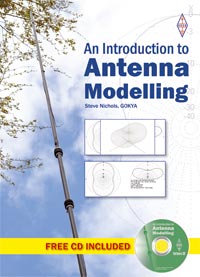I've now updated my propagation prediction charts for the UK through to April 2016.
See http://www.infotechcomms.co.uk/propcharts/
I've used the latest smoothed sunspot numbers from NOAA in the US. There is little point in updating them much further than four months as the SSNs change, and it takes me about three hours to do four month's worth of charts and upload them - that's a chart for every hour and for every band or 24 x 8=192 charts per month.
It is interesting to see how the solar cycle is falling away. In January 2015 the SSN was 62, now it is just 45. The coming months will see further falls.
This means that we will see fewer openings on 12m and 10m, but 15m should still open up at times. I worked the US Virgin islands on 15m CW this morning and it was open to the eastern seaboard of the US this afternoon so don't write it off.
The RSGB Propagation Studies Committee, of which I am the chair, is also working on a new online HF prediction system based on the ITU program ITURHFPROP.
This uses a different, but newer, ionospheric model to the VOACAP engine normally used, but the original ITURHFPROP software is not very easy to use.
But thanks to the work of Gwyn Williams (G4FKH), James Watson (HZ1JW) and Chris Behm we are getting closer to a web-based version. You can try the test model at http://www.predtest.uk/
Ultimately, it will have the ability to produce point to point predictions as well, just like VOACAP Online. But lets learn to walk before we run.
It will be interesting to compare the two models and Gwyn would welcome any feedback. His email details are on the web page for the new model
See http://www.infotechcomms.co.uk/propcharts/
I've used the latest smoothed sunspot numbers from NOAA in the US. There is little point in updating them much further than four months as the SSNs change, and it takes me about three hours to do four month's worth of charts and upload them - that's a chart for every hour and for every band or 24 x 8=192 charts per month.
It is interesting to see how the solar cycle is falling away. In January 2015 the SSN was 62, now it is just 45. The coming months will see further falls.
This means that we will see fewer openings on 12m and 10m, but 15m should still open up at times. I worked the US Virgin islands on 15m CW this morning and it was open to the eastern seaboard of the US this afternoon so don't write it off.
 |
| The new web based version of ITURHFPROP |
This uses a different, but newer, ionospheric model to the VOACAP engine normally used, but the original ITURHFPROP software is not very easy to use.
But thanks to the work of Gwyn Williams (G4FKH), James Watson (HZ1JW) and Chris Behm we are getting closer to a web-based version. You can try the test model at http://www.predtest.uk/
Ultimately, it will have the ability to produce point to point predictions as well, just like VOACAP Online. But lets learn to walk before we run.
It will be interesting to compare the two models and Gwyn would welcome any feedback. His email details are on the web page for the new model










